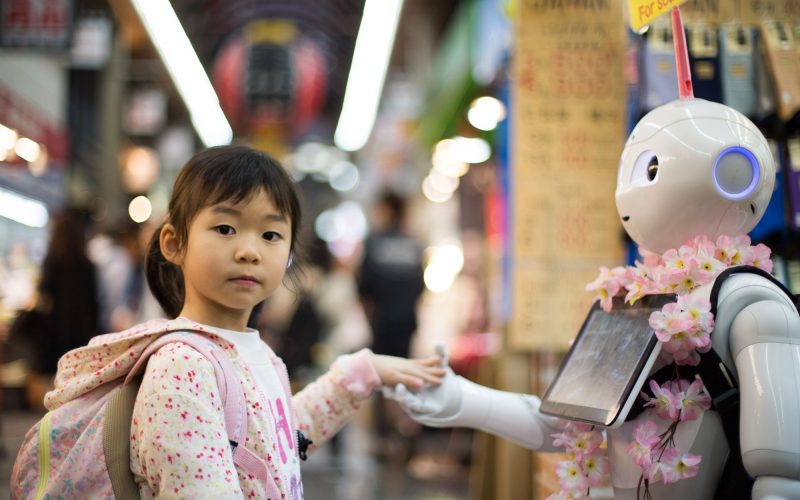Artificial Intelligence (AI) and Machine Learning (ML) are two of the most influential technologies of the 21st century. These technologies have revolutionized our lives in various ways, from self-driving cars to voice recognition, but what does the future hold? In this blog post, we’ll explore what’s next for AI and ML and how these cutting-edge technologies will shape our lives over the coming years.
The Impact of AI on Daily Life
Artificial intelligence has greatly impacted how we live our daily lives – from the smart home assistants that can show us breaking news and order us lunch to the virtual personal assistance bots that help keep our emails, meetings, and documents organized. AI makes mundane tasks more streamlined and efficient, allowing us to spend less time tackling menial chores and more time creating meaningful work or spending time with family. AI has made accessing resources easier by opening up doorways to information storage, analytics, communication networks, and more. It’s no wonder why AI is quickly becoming an integral part of how we navigate our increasingly digital world.
AI is already being used in a wide range of applications, from facial recognition to medical diagnosis. As technology advances, these applications will become increasingly sophisticated. For instance, AI algorithms are quickly becoming capable of recognizing patterns that would be too complex or time-consuming for humans to identify independently. This means that AI can now be used to automate processes such as data analysis, fraud detection, and stock market prediction with unprecedented accuracy.
In addition to automating mundane tasks, AI will also revolutionize how we interact with machines in our daily lives. Voice assistants such as Alexa, Siri, Google Assistant, and Cortana are just the beginning; soon enough, robots will be able to understand human emotions and respond accordingly. This means that machines won’t just be able to do things for us; they’ll also be better equipped to empathize with us when necessary.
The Role of Machine Learning
Machine learning is an integral part of any AI system. It enables machines to learn from large datasets without relying on explicit programming instructions. This means that machine learning algorithms can adapt their behavior based on feedback from their environment—a process known as reinforcement learning. As machine learning algorithms become increasingly advanced over time, they will enable machines to “learn” more quickly than ever before while retaining a high degree of accuracy.
As machine learning continues to evolve rapidly, it could eventually lead to fully autonomous vehicles and intelligent robots capable of performing complex tasks without human intervention. Furthermore, machine learning models could even help diagnose diseases or predict weather patterns with greater accuracy than ever before – ushering in an era where humans no longer need expertise in certain areas but can instead rely on powerful machine intelligence systems for assistance.
Machine learning also enables us to make better decisions and develop smarter solutions faster than ever. Machine learning offers a vast range of intelligent capabilities with applications across fields, including health care, agriculture, finance, retail, transportation, and more, by allowing quick and accurate analysis of large data sets. For example, its predictive power can help identify diseases quicker and allow businesses to respond more rapidly to customer demands. Its automation potential allows for greater efficiency in a wide range of tasks, from alerting conservationists when endangered animals are spotted in a particular area to organizing personalized ad campaigns for retailers. In essence, machine learning has helped open up new possibilities that make life easier and kinder to humanity.
AI in the Workplace
The rise of artificial intelligence (AI) has brought remarkable transformation to the workplace, allowing businesses to increase productivity, cut costs and create better customer service experiences. Companies using AI-driven solutions can make faster decisions, automate processes and develop more accurate predictions about their operations. In addition, AI can generate insights from big data for business leaders, help managers identify potential issues or problems in their organization, and provide strategic guidance based on pre-populated content. Integrated with existing systems, AI has immense potential to improve decision-making across all types of businesses. With its innovative capabilities, businesses can remain competitive in today’s ever-evolving market.
Automation is one of the main benefits of AI systems because it can process large amounts of data quickly and make decisions faster than humans. Additionally, AI can increase accuracy by drastically reducing the potential for human error. By automating repetitive processes like data input or customer service requests, businesses can save time and money, allowing them to focus on more complex tasks. Finally, AI can be used to learn from data over time and provide insights that would otherwise take humans considerably longer to obtain.
One of the most controversial advantages of AI systems is how it affects manual labor. The past decade has seen the emergence of innovative artificial intelligence technologies, which have revolutionized manual labor and increased productivity in various industries. In manufacturing, AI-enabled robots have replaced human workers, allowing companies to achieve greater production speeds with fewer errors. The agricultural industry relies on AI to automate many manual labor tasks such as crop sorting, harvesting, and cultivation. Similarly, AI has revolutionized healthcare by automating mundane but vital back-office processes such as claims processing and data entry. With these advancements in automation technologies, many industries can now focus their efforts on new frontiers of innovation while realizing cost savings in areas formerly reserved for manual labor. Indeed, it can be said that this wave of AI-driven automation has made an indelible impact on how we live, work, and play by enabling us to do more with less.
AI and ML have already had an incredible impact on our lives—and things will only get more exciting as technology advances rapidly over the coming years. We can look forward to a future where AI-powered robots perform complex tasks autonomously while intelligent virtual assistants provide us with personalized advice whenever we need it—all thanks to cutting-edge machine learning algorithms that enable machines to learn faster than ever before! Instead of thinking that AI systems replace human intelligence, we should focus on using them to enhance our capabilities. We should also look for ways to integrate AI into our workflow that works for us and does not limit our creativity or autonomy. This might mean developing artificial intelligence systems that can learn from our feedback or provide tailored guidance or insights. Additionally, businesses and organizations should strive to create a workplace environment that encourages collaboration between humans and machines in order to make the most of AI’s learning potential.
With so many possibilities ahead of us, there is no doubt that AI and ML will continue playing an integral role in shaping our future for many years to come!

